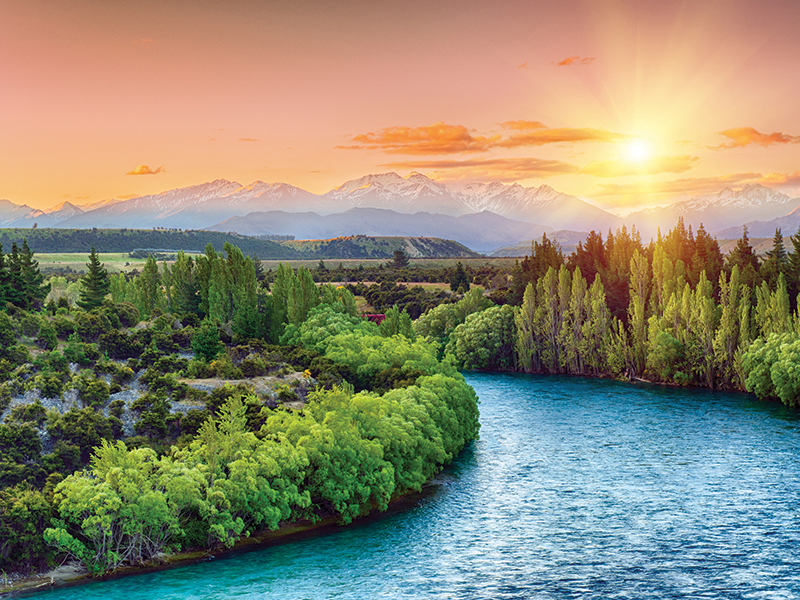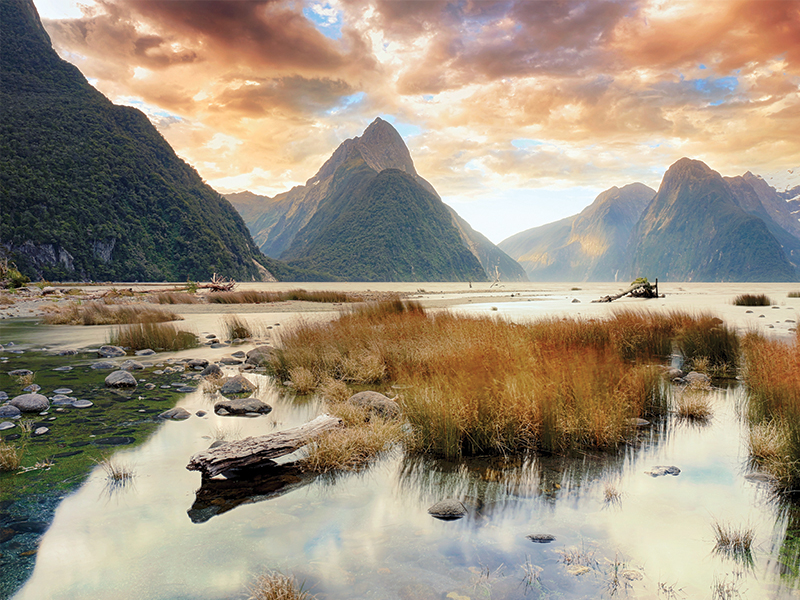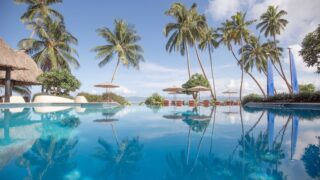There are plenty of great travel opportunities in New Zealand. Popular destinations include Auckland, Lake Taupo, Wellington, Christchurch, Queenstown, Kaikoura, Raglan, Marlborough and Stewart Island. Before you head off do a bit of research and know the do’s and don’ts. Here are some key facts to help you plan your trip: when to go, what to say, what you need before you go and more!
The basics
Population: 4.8 million
Capital: Wellington
Religion: Christianity is the predominant religion
Emergency numbers: 111 (police, ambulance and fire service)
Fact file
- New Zealand was the first country to have its three top positions of power held simultaneously by women: the Prime Minister (Helen Clark), the Governor General (Dame Silvia Cartwright), and the Chief Justice (Sian Elias).
- In 1893, New Zealand was the first major nation to have universal suffrage.
- New Zealand has two national anthems: God Save The Queen and God Defend New Zealand.
- Sir Edmund Hillary, the first man to reach the peak of Mount Everest (with his climbing partner Tenzing Norgay), was a New Zealander (born in Auckland) and his face is on the New Zealand $5 bill.
- Taumatawhakatangihangakoauauotamateaturipukakapikimaunga-horonukupokaiwhenuakitanatahu is the Māori name for a hill in Hawke’s Bay.
- Wellington is the southern-most capital city in the world.
The key dates
- 6 February: Waitangi Day. New Zealand’s national day commemorates the first signing of the country’s founding document, the Treaty at Waitangi in 1840.
- 9 February: Marlborough Wine & Food Festival. New Zealand’s oldest and premier festival of its kind, in a stunning vineyard location.
- 25 April: Anzac Day. First observed in 1916, Anzac Day commemorates Australians and New Zealanders who lost their lives in war.
- 26 September – 6 October: WOW, World of Wearable Arts Awards Show, Wellington. An annual festival combining fashion, art, dance and music.
The hotspots
Popular destinations include Auckland, Lake Taupo, Wellington, Christchurch, Queenstown, Kaikoura, Raglan, Marlborough and Stewart Island.
Three areas have World Heritage Site status, including New Zealand’s Sub-Antarctic islands.
Some itinerary ideas
- South Island: Picton – Marlborough Sounds – Nelson – Kaikoura – Christchurch – Dunedin – Queenstown – Milford Sound
- North Island: Auckland – Bay of Islands – Rotorua – Taupo – Wellington
How to stay healthy
- If you’re setting out on a hike or to climb a mountain, make sure somebody knows of your whereabouts – or contact the Department of Conservation (DOC). Weather can change quickly, making conditions very dangerous for anyone who isn’t adequately prepared.
- While there are no snakes or other especially dangerous animals in New Zealand, small insects including sandflies can be an annoyance. (The Milford Track in the South Island ends at “Sandfly Point”.) Repellents and longsleeved clothing can help
While you’re there, please don’t…
- … try to bring natural products through customs. Biosecurity is treated very seriously in New Zealand.
- … eat or drink when inside a Maori wharenui (meeting house) – the house is considered a sacred area.
Before you go, read …
- The Bone People by Keri Hulme (1984) – one of the country’s most successful novels, the story weaves tales of Maori myths and European heritage.
- How to Watch a Game of Rugby by Spiro Zavos (2004) – a sport journo’s book about New Zealand’s obsession with rugby.
Before you go, watch …
- The Lord of the Rings – Peter Jackson’s first trilogy of Tolkien films showcases the New Zealand countryside majestically.
- Whale Rider – highly regarded drama about a twelve-year-old Maori girl who wants to become the chief of her tribe.
They said it
“New Zealand is not a small country but a large village.” – director Peter Jackson
“Get the whanau together, stay in a bach, crack open the chilly box and slap on your jandals.” – Prime Minister John Key, joking about reasons to visit New Zealand
“New Zealand is my favourite country to visit.” – surfer Tom Curren
Important questions
Do I need a visa?
Most visitors to New Zealand do not require visas for visits of less than three months. Citizens of countries not on the visa-waiver list can find detailed information about applying for a visa at immigration.govt.nz.
What’s the money situation?
The New Zealand dollar (NZD) is the national currency of New Zealand. Foreign currency and travellers cheques can be changed at most banks or licenced money changers. Credit cards are widely accepted and ATM withdrawals possible at the many machines located throughout the country.
When’s the best time to visit?
New Zealand has a temperate climate all year round. Regions vary from extremely wet to semi-arid to subtropical, so check your destination beforehand. Most skiers book between June and September.
What’s the lingo?
English. Around 3 to 4 percent of the population speak Maori; here are a few phrases to get you started:
- Hello: Kia ora
- How are you? Kei te pehea koe?
- What’s your name? Ko wai tou ingoa?
- My name is …: Ko … ahau
- Where are you from? No hea koe?
- Goodbye: E noho ra (said by person leaving); E haere ra (said by person staying)
Is there anything I should know about meeting the locals?
A handshake is the formal way of greeting someone in New Zealand. The traditional Maori greeting is the hongi, expressed by the rubbing or touching of noses.
What’s a must-try dish?
Pavlova – a sweet meringue-like crust filled with whipped cream and topped with fresh fruit. (The debate continues as to its country of origin, with Australia and New Zealand both laying claim.)
What should I buy as a souvenir?
“Cryovaced” New Zealand lamb, or an All Blacks rugby shirt.
Like this? See more in our Travel section!
Where to stay and play in New Zealand
Climbing Mount Kinabalu
Best surf breaks in Southeast Asia
This article first appeared in the Spring 2020 issue of Expat Living magazine. Subscribe now so you never miss an issue.








